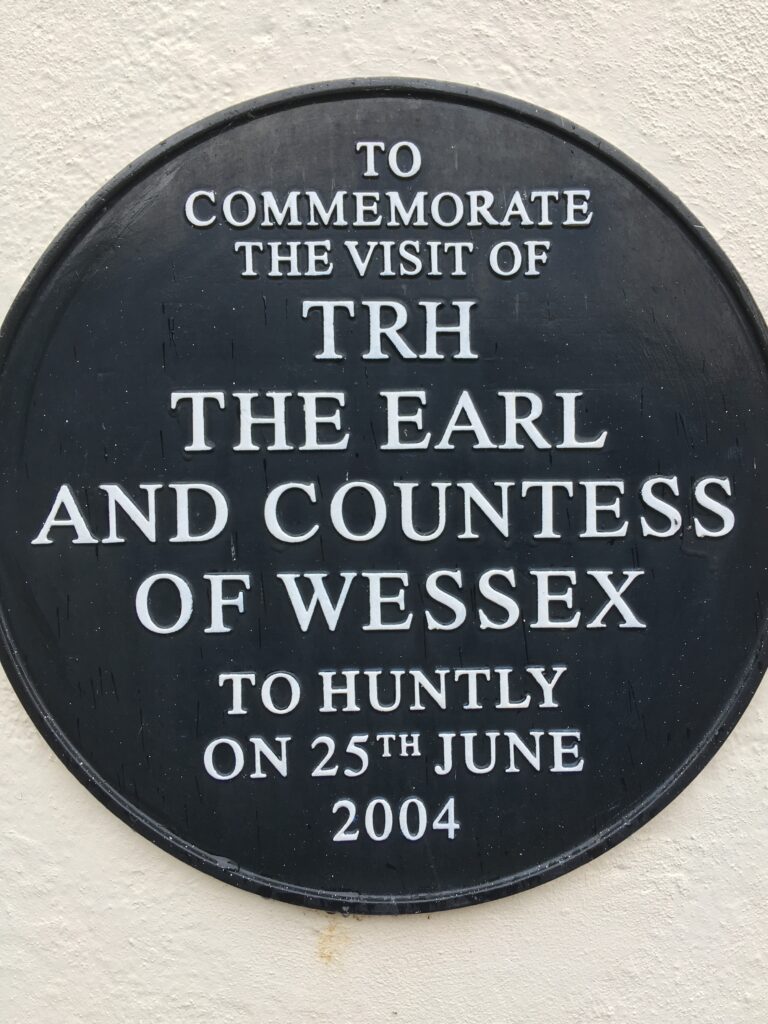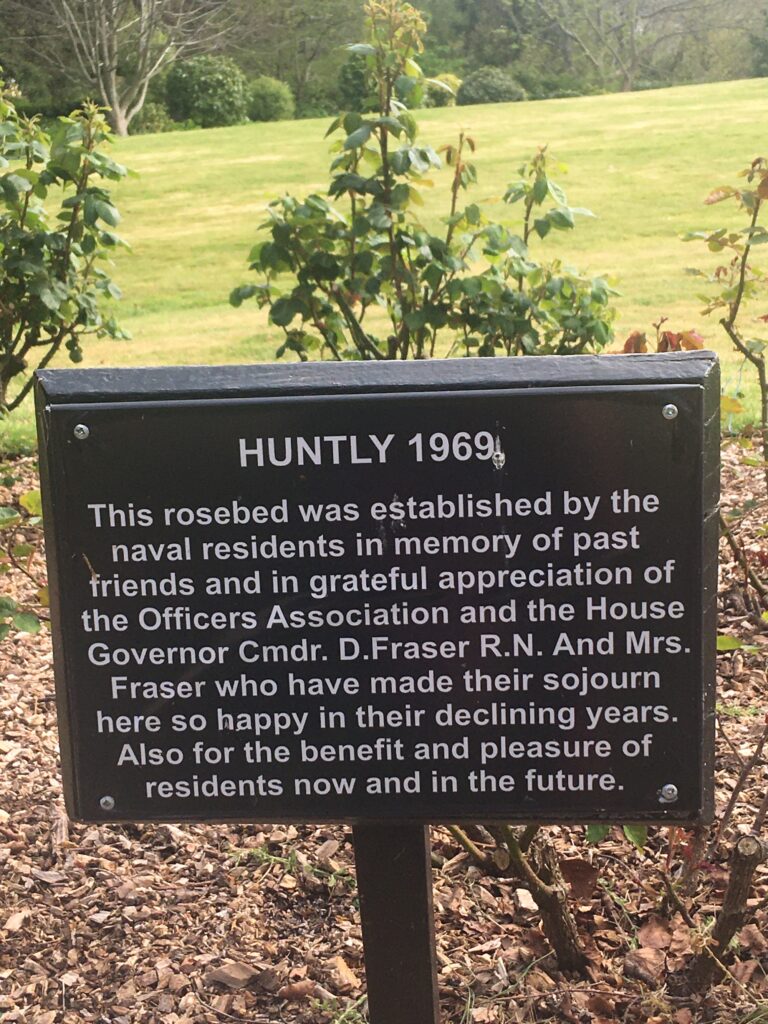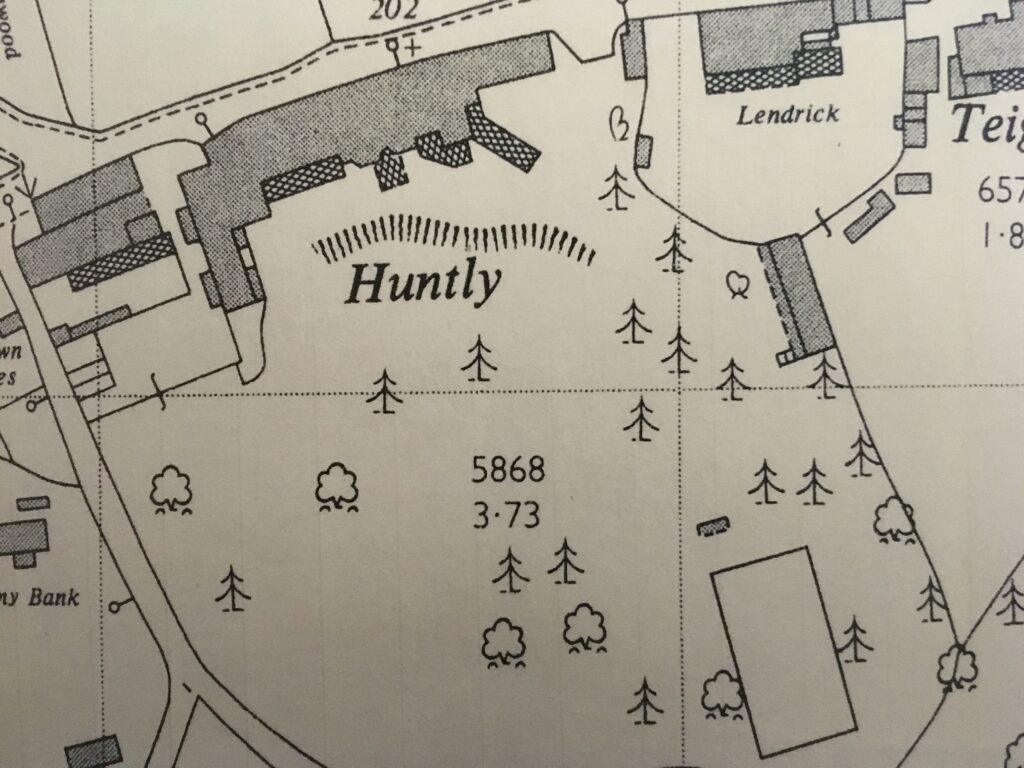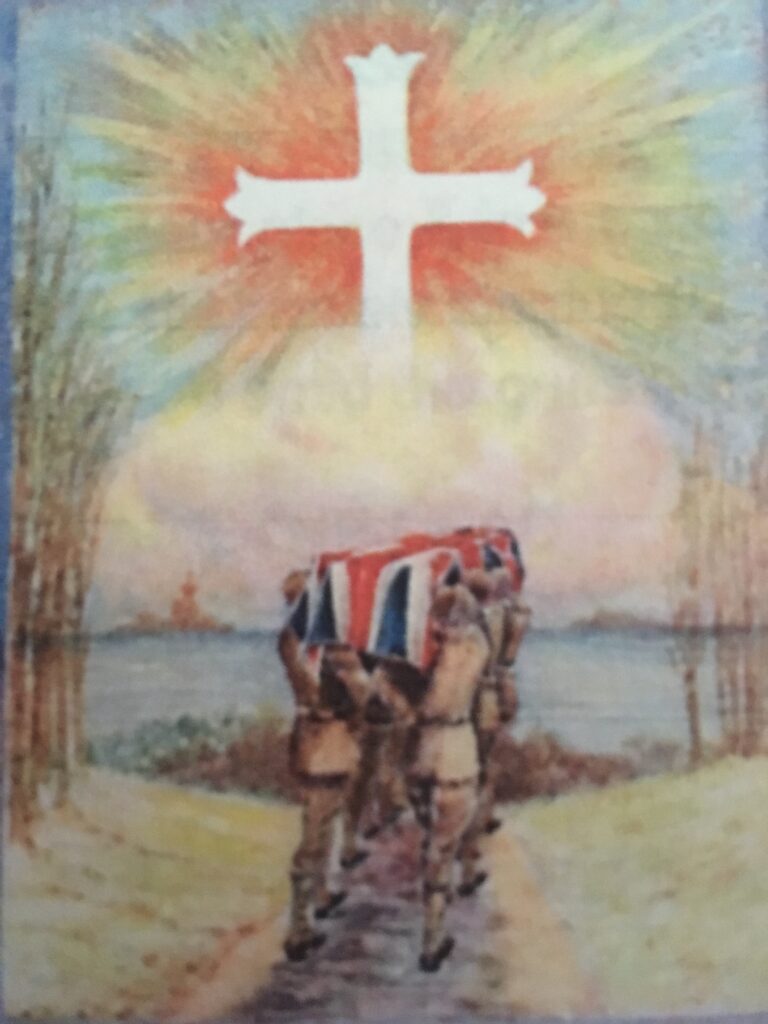Part Three 1949-2020
The Officers Home
In 1949 Huntly was sold to the Officers Association to replace an existing retirement home for officers in Frimley. The residents in Frimley relocated in January 1950. Points of note from the outset:- The Home was open to ex-regular and reservist officers from all 3 services.
- In 1953, the average age was 73 with a range of 65 to 87. Veterans of the Boer war were certainly resident at the beginning. There were approximately 35 residents.
- Residents could spend up to month away from the home. Any more and they would be judged to have no need to live at Huntly.
- Unlike other retirement homes, chronic illness was a bar to entry. Also married couples would not be admitted, and indeed between opening and May 1953, 5 Huntly residents married and accordingly were required to leave.
- The home was from the outset managed by a resident governor. The first governor was Lt Col A C Whitcombe, a veteran of the Royal Artillery in both World Wars.
The Officers home – The Royal Connection
On the west wall of Huntly today there is a plaque commemorating a visit on 25 June 2004 of the Earl and Countess of Wessex. There are however much earlier connections. It was reported that Huntly had a strong association with the late Queen Mary (wife of King George V who reigned from 1910-1936). She sent regular gifts to the home, once commenting that the coffee cups she sent were to be used and not looked at. Another gift was a dinner gong which had once belonged to George V. On 21 September 1954, the Mid Devon Advertiser recorded a visit by Princess Marie Louise on 19 September “to inspect the house and meet residents”. Princess Marie Louise was a grand daughter of Queen Victoria and an active member of the British Royal family with many charitable interests.
Plaque marking the Wessex visit
The Officers Home – The House Governors
During its time the house was run by a succession of 7 officers representing all 3 services. 1950 Lt Col A C Whitcombe MBE, RA 1960 Cdr D Fraser RN 1973 Capt J Booth CBE, Bsc, RN 1979 Sqd Ldr W E Robinson MBE, RAF 1985 Lt Col B E Lane RAOC 1992 Cdr J V Hodgkinson BSc (Eng), RN 2003 Lt Col R D Horahane RAOC A memorial plaque to Commander Fraser and his wife remains to this day in the rose garden surrounding the flag pole.
Rose garden plaque

OS map 1963
Officers Home – The Residents
At a later date there will be added a table listing those who have been identified as residents to date. This is a working document and will be expanded as research continues. However a couple of residents are worthy of immediate comment. Captain Edgar Kinghorn Myles was born in East Ham in July 1894. Serving with the 9th battalion of the Worcestershire regiment in Gallipoli and then the Middle East, he was awarded the Victoria Cross for bravery at Sanna-I-Yat Mesopotamia (modern day Iraq) in April 1916. For further bravery in the same theatre of war in January 1917, he was awarded the DSO. It would appear that some time in the 1950s, he ran into financial difficulties, having to sell his medals. These were purchased from the original dealer by the Worcestershire Regiment and they are to this day on display in the regimental museum. Given his military record the regiment took a keen interest in his future and persuaded him to take a place in Huntly. He resided there from February 1964 until his death at the age of 82 on 31 January 1977. He was cremated at Torquay crematorium and his ashes scattered in the Garden of remembrance. Ernest Clegg (1876-1954) was a well known cartographer and illustrator. Born and educated in Birmingham (at Birmingham School of Art) he served in 1899 as a Trooper in the 7th Dragoon Guards in South Africa. Following the Boer War he returned to Birmingham and then emigrated to the US where he worked in New York as a jewellery designer for Tiffanys. He returned to the UK in 1914, finding himself by 1915 as a captain on the Western Front with the 7th battalion of the Bedfordshires. During home leave a chance visit to HMS Revenge at Scapa Flow resulted in him witnessing at first hand the battle of Jutland. Injured in the war, he then found himself with a number of home postings before he visited HMS Revenge once gain and witnessed the scuttling of the German Fleet at Scapa Flow in 1919. He returned to the US, but not before he had illustrated a limited edition of John Macrae’s poem “In Flanders Field”. In the US he concentrated on cartography, producing in particular, a superb illustration of Lindbergh’s flights including the first solo flight over the Atlantic. Clegg returned to the UK in 1944, working on a series of British maps and was awarded the MBE in 1947. He took up residence at Huntly in 1952 before dying in a Paignton nursing home on 9 December 1954. Reportedly some of his work hung in the entrance hall at Huntly in the early years as an Officers Home. Additionally several of his watercolours of the Royal Navy in World War 1 hang on display at the Royal Naval College Dartmouth.
In Flanders Field
